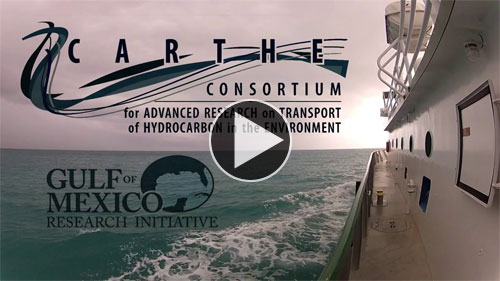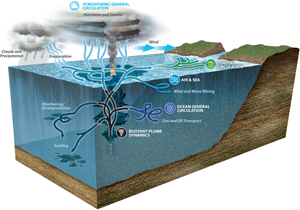CARTHE Presentations
This collection of CARTHE presentations can be used to better understand our oil spill, ocean currents research or as a resource for you to use in giving presentations to your students. If you have any questions or feedback, please contact us at lbracken [at] rsmas [dot] miami [dot] edu.
2015 Gulf of Mexico Research Initiative meeting
Plenary Presentation, CARTHE Overview and Accomplishments to Date by Tamay Ozgokmen
2015 NOSB Webinar by Dr. Arthur Mariano, University of Miami
“Ocean Currents and the 2010 Deep Water Horizon Oil Blowout”
Description: This webinar discusses what happened to the Deep Water Horizon blowout oil from the pipe to the beaches and marshes. It will emphasize the physical processes that cause oil transport and dispersion, especially ocean currents and winds. The measurement and prediction of ocean currents for oil spill modeling will be detailed.
Learn more at: http://nosb.org/learn/professional-de…
2016 Oil Spill Technology Seminar, organized by the Gulf Sea Grant Program
“CARTHE Consortium contributions to the technology of oil-spill transport prediction” by Brian Haus, University of Miami
Description: Brian described surface layer transport is of primary importance for oil spill response planning and explained the development of innovative approaches to surface drifter technologies as deployed during the CARTHE consortium GLAD and LASER experiments. This critical link between fundamental laboratory studies and full-scale experimentation was explored.
2018 Oil Spill Technology Seminar, Part 2, organized by the Gulf Sea Grant Program
“Advances in drifters used to study ocean currents and pollutant transport” by Guillaume Novelli, University of Miami
Description: Dr. Novelli shared the history of surface drifters and how they have evolved through time. He also spoke about the development and creation of the biodegradable CARTHE drifter and shared how they have used these drifters to learn more about ocean surface currents. This presentation was given as part of the “Technology used to study oil spills Part 2” seminar held on August 29, 2018 in Ocean Springs, MS.



